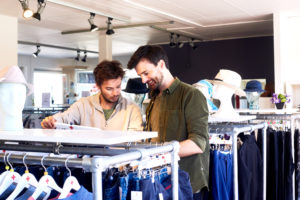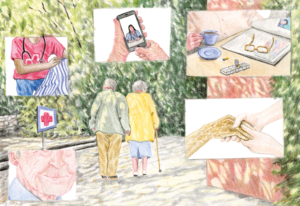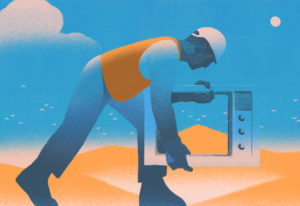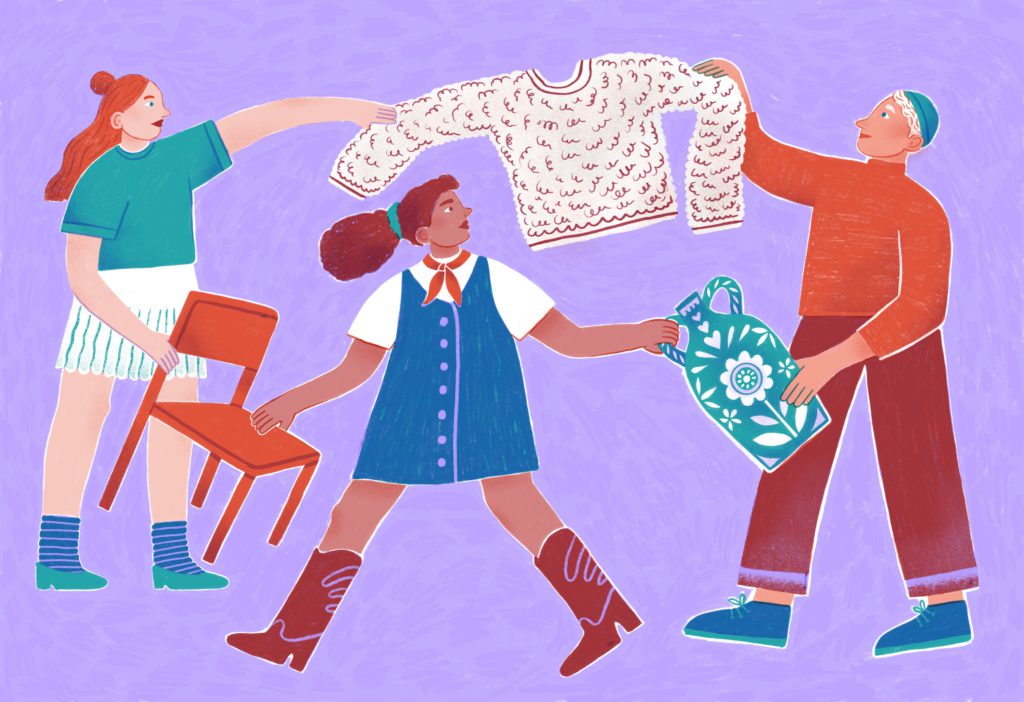
Twinkel Achterberg
Description
The Danish Red Cross has around 255 thrift shops. Being a small country, some cities have more than one Red Cross shop, generating a substantial economy for the activities of the Danish Red Cross.
The shops are run by 10,000 volunteers. Everyone engaged in operating the stores is a volunteer. This applies to management, social media, sorting, pricing and more.
The products range from clothing to furniture, accessories for your interior design, not to mention all the odd donations that make their way through the Danish Red Cross Shop to a customer.
Context
The Red Cross started its recycling business back in 1975, as there was an increased need for self-financing of activities. At that time, many NGOs started setting up thrift shops, where the organizations could come into contact with relevant beneficiaries.
Since then, the Danish Red Cross has developed the business model which nowadays is a significant contributor to the finance of its activities.
In addition to the generation of revenue, these thrift stores provide the opportunity for the Danish Red Cross to be active in the local environment.
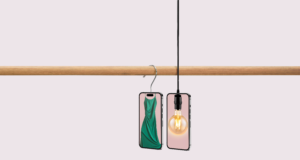
Technical details & Operations
Nowadays, the Danish Red Cross has 255 physical shops that gather more than 8.5 million items.Their net profit is more than 13 million euros a year with a turnover of 37,5 million. Moreover, the shops involve more than 10.000 volunteers, mainly mature pensioners.
In 2023 the Danish Red Cross also launched a webshop, selling and shipping clothing from one sole location. This came as a digital solution used by local volunteers and central employees, with the purpose to reach a broader customer base.
The webshop also offers furniture and other items in a “click and collect solution”, where the customer can pick up the item in the particular Red Cross shop.
This gives each shop an increased opportunity of a wider exposure of the products they choose to put online, items that perhaps have a limited customer appeal in their own town. There is also a driver for getting new customers in the shop.
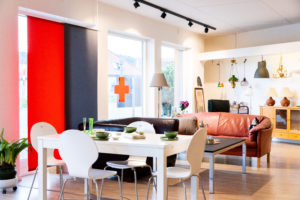
How does the process work?
Besides donating items directly to the local Danish Red Cross shop, donations are also gathered in around 2000 containers around Denmark.The operation is supported by 2 sorting centers. The staff from the centers help empty the immense amount of containers. Sorting around 10,000-ton textiles a year per center.
Furthermore, a small team of specialists support the 255 shops with the development its marketing, branding, data, training of volunteers etc.

As a way to make this model more sustainable, the Danish Red Cross launched a new initiative, where surplus textiles are offered to both companies in Denmark and private buyers who want to buy usable textiles. They work with designers, companies and individuals who want to produce their product from recycled materials. The textiles are offered online in bulks of 10 kg in sorted categories, such as denim, linen, leather etc. These textiles are sent directly from one of the sorting centers. Køb tekstiler hos Røde Kors | Røde Kors (rodekors.dk)
The remaining textiles which are not sold in the shops, are being exported to other thrift shop chains abroad, or other industrial buyers.
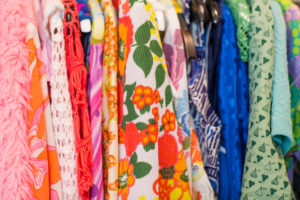
Who are the customers?
The customers cover all ages, incomes, etc. However, for the past 5 years, the amount of young customers has peaked, and is now the largest customer group.
The young customers are often driven to thrift shop due to positive impact it has on climate change, and the enjoyment they get from the treasure hunt of unique items.
Deployment & Impact
Together with external specialists, the Danish Red Cross has conducted a climate report which not only shows the amount of Co2e emitted by the company, but also the Co2e offsetting amount provided by the recycling of articles.
If 50% of items sold by the Danish Red Cross replace a purchase, these activities reduce the carbon footprint by approximately 18,000 tons Co2e (Annual Report 2022). Find more about it here: Klimaeffekten af genbrug_rapport_16 juni (rodekors.dk)
In 2022, the 250 Danish Red Cross shops generated a net profit of more than 13 million euros, which were spent on various social activities in Denmark and abroad. The activities are listed here: Vores arbejde | Røde Kors (rodekors.dk). The surplus is the backbone of the financing of their local branches’ activities, as the surplus is administered by the boards of the local branches. In this way they ensure that the local branches have the financial means to meet local social needs.
The 255 thrift shops are widely known for offering a meaningful way of contributing to the work of the Danish Red Cross in a different way, other than being directly involved in the operation.
